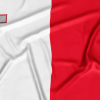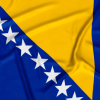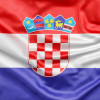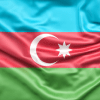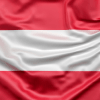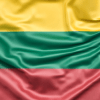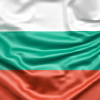About Malta
Malta is the smallest and most densely populated country in the European Union.
Square – 316 km²
Population — 542,051 people.
The capital: Valletta.
The national languages: Maltese and English.
The Republic of Malta is composed of five islands, namely Malta, Gozo, Comino, and the uninhabited Kemmunett and Filfa.
Malta is an island country in the Central Mediterranean Sea. The country is boarded with Italy to the north, Libya to the south, and Tunisia to the southwest.
History

Malta boasts a rich and diverse history spanning over seven millennia. It has been under the rule of various civilizations, including the Phoenicians, Greeks, Romans, Arabs, the Knights of Malta, the French, and finally the British. Imprints of the previous cultures are still visible across the island. Dating back to around 3600 BC, the Megalithic Temples of Malta stand as the world’s second-oldest structures. Throughout its history, Malta has held strategic importance for controlling the Mediterranean. It gained independence from Britain in 1964. In recognition of their unwavering defense of crucial military bases during World War II, the Maltese people were awarded the George Cross. Malta joined the EU in May 2004. Over the past decade and a half, the island has emerged as a major freight transshipment hub, a financial center, and a popular tourist destination in Europe.
Religion

Religion holds a significant place in Maltese society and culture. As per the 2018 Religious Census, Christianity is the predominant faith, embraced by 88.5% of the Maltese population. Catholicism stands out as the major religion, with 82.6% of the population identifying as Catholics. Other Christian denominations, such as Eastern Orthodoxy (3.6%) and the Church of England (1.3%), have a presence, along with various other Christian churches (1%). A minority of the population follows different religions, including Islam (3.9%), Hinduism (1.4%), Buddhism (0.5%), and Judaism (0.3%).
Language

Malta boasts two official languages – Maltese and English, reflecting the island nation’s diverse linguistic heritage. Maltese serves as the national language, with over 90% of the population conversant in it. This Semitic language has evolved from Siculo-Arabic, initially originating as a Maghrebi Arabic dialect during the period of the Emirate of Sicily between 831 and 1091. Since 1934, English has held official status in Malta and is extensively employed in various domains, including business, government, and education, contributing to the nation’s multilingual character.
Leisure Activities

Malta offers an array of experiences to its residents and visitors, including a diverse culinary scene, a rich cultural heritage, numerous historical sites, and stunning natural landscapes. The Mediterranean climate provides an ideal setting for year-round outdoor activities, such as scuba diving around the picturesque islands. Dive courses cater to individuals of all skill levels, guiding them to explore underwater treasures like World War II wrecks and caves. Water sports enthusiasts can enjoy activities like swimming, parasailing, sailing, jet skiing, and speed boating.
All international students have the opportunity to participate in sports competitions like water polo and football matches. For more tranquil pastimes, Malta offers a wide range of leisure activities. International students have the opportunity to play golf at the Royal Malta Golf Club in Valletta, participate in strolling, practicing meditation, reading, engaging in games, and dancing. Exploring the local culture is a delight, with numerous festivals celebrating Malta’s rich heritage. The cultural scene is vibrant, offering theater, ballet, concerts, and year-round events. As night descends, the dynamism of Maltese cities comes to life, offering a variety of entertainment options, including nightclubs, bars, pubs, and restaurants.Â
Education

Higher Education in Malta offers international students access to high-quality European-level education at affordable tuition and living costs. Maltese universities provide a diverse range of academic programs across various disciplines, catering to students’ diverse interests and aspirations. The Maltese Higher Education System aligns with contemporary trends, challenges, and the Bologna Process Agreement. It follows a three-cycled degree structure and incorporates the European Credit Transfer and Accumulation System, ensuring transparency, comparability of study programs, and facilitating student mobility and credit transfers.
- The first cycle in Malta’s degree structure is the Bachelor’s degree, typically taking 3 to 4 years to complete, varying by the field of study. Bachelor’s programs provide students with a solid foundation in their chosen field, preparing them for career opportunities in Malta or furthering their education with a Master’s degree.
- The second cycle, the Master’s Degree, usually spans 1 to 2 years. Master’s programs in Malta focus on advanced skills and in-depth knowledge within a specific field. Graduates of Master’s programs have a broader range of career prospects, often with higher earning potential, and can also pursue a Doctoral degree.
The third and final cycle is the Doctoral Degree typically lasts 3 to 4 years. Doctoral programs in Malta emphasize original research under the guidance of a supervisor or research team. Students are expected to contribute to the advancement of knowledge in their field through independent research and the development of a doctoral thesis.






